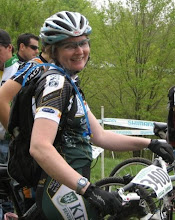Sometimes, I see instructors preparing for exams and getting bogged down in all of the terminology, studying kids development literature, and others' progressions or ideas. That stuff is important, for sure. But in order to have a ton of fun teaching kids, we have to apply all of that professional knowledge while looking at the world through kid-colored glasses. Yeah, the big fluorescent ones. Like these:

A few of the Liberty gang were clinic'ing with me this weekend - a kids' teaching clinic. One of the required clinics everyone has to take each year. Usually I make everyone sing "Head, Shoulders, Knees and Toes" loudly while skiing at some point during these clinics. But we never got to it.
I gave each of the three groups a description of children we often see come through our programs and asked them to develop a program to share with the group. Once they got started thinking about movements and their ideas, I bugged them to get more creative.
Here's the best part - they rocked it. Each group found something most kids already knew about and used it in ways I hadn't thought about before. One pair had us opening and closing the car doors (our thighs) to generate edging movements.
Another had us hiccupping... big time. The hiccups were SOOOO BIG our skis came off the ground. And a third group had us building invisible snowmen as a team. Of course, first we had to bring gigantic invisible snowballs down the slope without dropping 'em.
So next time you're teaching children (or preparing for an exam!) - get creative! Count snow foxes in the woods, mimic a lion hunting wildebeest, or pretend to be Winnie the Pooh, Tigger and Piglet too!

A few of the Liberty gang were clinic'ing with me this weekend - a kids' teaching clinic. One of the required clinics everyone has to take each year. Usually I make everyone sing "Head, Shoulders, Knees and Toes" loudly while skiing at some point during these clinics. But we never got to it.
I gave each of the three groups a description of children we often see come through our programs and asked them to develop a program to share with the group. Once they got started thinking about movements and their ideas, I bugged them to get more creative.
Here's the best part - they rocked it. Each group found something most kids already knew about and used it in ways I hadn't thought about before. One pair had us opening and closing the car doors (our thighs) to generate edging movements.
Another had us hiccupping... big time. The hiccups were SOOOO BIG our skis came off the ground. And a third group had us building invisible snowmen as a team. Of course, first we had to bring gigantic invisible snowballs down the slope without dropping 'em.
So next time you're teaching children (or preparing for an exam!) - get creative! Count snow foxes in the woods, mimic a lion hunting wildebeest, or pretend to be Winnie the Pooh, Tigger and Piglet too!



I really need to find the video I shot last year of the "Heads, Shoulders, Knees and Toes" song. That was priceless.
ReplyDeletewe must have video of Becky singing on the blog
ReplyDeleteIt's tue children learn better through creativity from both sides.
ReplyDelete